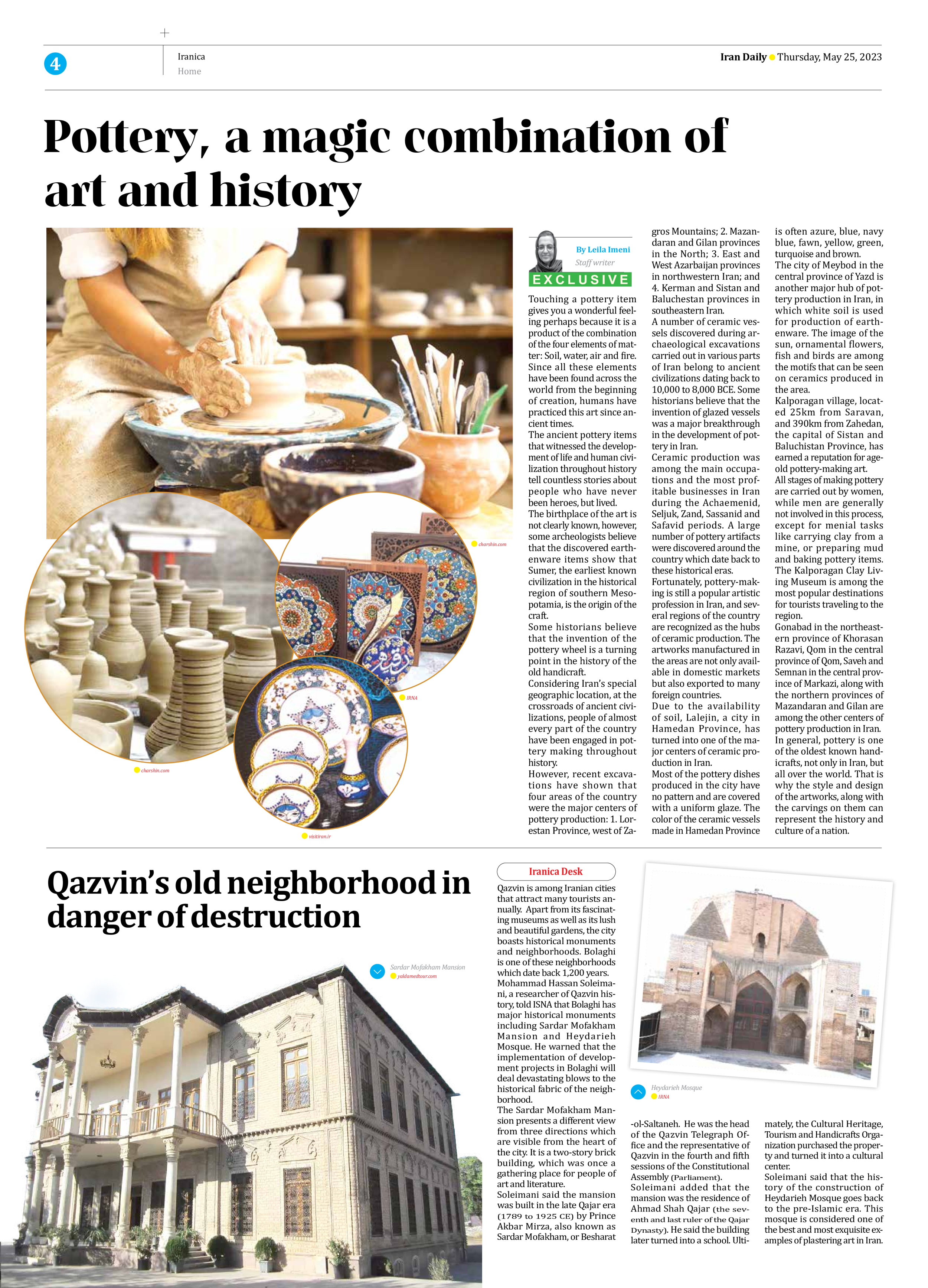
Pottery, a magic combination of art and history
By Leila Imeni
Staff writer
Touching a pottery item gives you a wonderful feeling perhaps because it is a product of the combination of the four elements of matter: Soil, water, air and fire. Since all these elements have been found across the world from the beginning of creation, humans have practiced this art since ancient times.
The ancient pottery items that witnessed the development of life and human civilization throughout history tell countless stories about people who have never been heroes, but lived.
The birthplace of the art is not clearly known, however, some archeologists believe that the discovered earthenware items show that Sumer, the earliest known civilization in the historical region of southern Mesopotamia, is the origin of the craft.
Some historians believe that the invention of the pottery wheel is a turning point in the history of the old handicraft.
Considering Iran’s special geographic location, at the crossroads of ancient civilizations, people of almost every part of the country have been engaged in pottery making throughout history.
However, recent excavations have shown that four areas of the country were the major centers of pottery production: 1. Lorestan Province, west of Zagros Mountains; 2. Mazandaran and Gilan provinces in the North; 3. East and West Azarbaijan provinces in northwestern Iran; and 4. Kerman and Sistan and Baluchestan provinces in southeastern Iran.
A number of ceramic vessels discovered during archaeological excavations carried out in various parts of Iran belong to ancient civilizations dating back to 10,000 to 8,000 BCE. Some historians believe that the invention of glazed vessels was a major breakthrough in the development of pottery in Iran.
Ceramic production was among the main occupations and the most profitable businesses in Iran during the Achaemenid, Seljuk, Zand, Sassanid and Safavid periods. A large number of pottery artifacts were discovered around the country which date back to these historical eras.
Fortunately, pottery-making is still a popular artistic profession in Iran, and several regions of the country are recognized as the hubs of ceramic production. The artworks manufactured in the areas are not only available in domestic markets but also exported to many foreign countries.
Due to the availability of soil, Lalejin, a city in Hamedan Province, has turned into one of the major centers of ceramic production in Iran.
Most of the pottery dishes produced in the city have no pattern and are covered with a uniform glaze. The color of the ceramic vessels made in Hamedan Province is often azure, blue, navy blue, fawn, yellow, green, turquoise and brown.
The city of Meybod in the central province of Yazd is another major hub of pottery production in Iran, in which white soil is used for production of earthenware. The image of the sun, ornamental flowers, fish and birds are among the motifs that can be seen on ceramics produced in the area.
Kalporagan village, located 25km from Saravan, and 390km from Zahedan, the capital of Sistan and Baluchistan Province, has earned a reputation for age-old pottery-making art.
All stages of making pottery are carried out by women, while men are generally not involved in this process, except for menial tasks like carrying clay from a mine, or preparing mud and baking pottery items. The Kalporagan Clay Living Museum is among the most popular destinations for tourists traveling to the region.
Gonabad in the northeastern province of Khorasan Razavi, Qom in the central province of Qom, Saveh and Semnan in the central province of Markazi, along with the northern provinces of Mazandaran and Gilan are among the other centers of pottery production in Iran.
In general, pottery is one of the oldest known handicrafts, not only in Iran, but all over the world. That is why the style and design of the artworks, along with the carvings on them can represent the history and culture of a nation.







